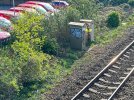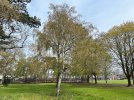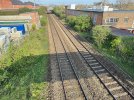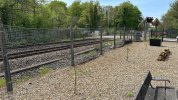Envoy
Established Member
- Joined
- 29 Aug 2014
- Messages
- 2,480
Why does Network Rail allow trees to grow so close to the tracks? Not only do they present a danger in high winds and can brush against the sides of trains but leaf fall is also a problem. Trees and bushes also block the view for passengers and present a fire hazard when steam trains use a line.
I was by the South Wales Main Line this morning and noticed young Silver Birch trees (photo 1) growing close to the tracks. Now, you would think that they would recognise these and either dig them up whilst small or at least cut them to ground with some hand held loppers. Instead, trees seem to be left to get bigger - which then requires greater effort and hence cost to remove them. Photo 2 shows a mature Silver Birch for those who don’t realise how big these trees can get. Photo 3 shows masses of the dreaded Buddleia bushes growing by the SWML in west Cardiff. The dead flower heads from last summer have of course turned to seed to be dragged along in the slip stream of trains for wider distribution.
I was by the South Wales Main Line this morning and noticed young Silver Birch trees (photo 1) growing close to the tracks. Now, you would think that they would recognise these and either dig them up whilst small or at least cut them to ground with some hand held loppers. Instead, trees seem to be left to get bigger - which then requires greater effort and hence cost to remove them. Photo 2 shows a mature Silver Birch for those who don’t realise how big these trees can get. Photo 3 shows masses of the dreaded Buddleia bushes growing by the SWML in west Cardiff. The dead flower heads from last summer have of course turned to seed to be dragged along in the slip stream of trains for wider distribution.




